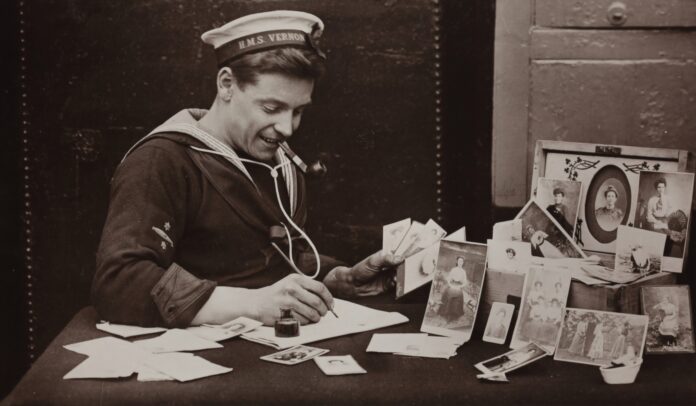The Battle of Stalingrad was a major turning point in World War II and one of the deadliest battles in history. It took place between August 23, 1942, and February 2, 1943, in the city of Stalingrad, located in southwestern Russia (present-day Volgograd). The battle was fought between the Axis powers, led by Nazi Germany, and the Soviet Union. The outcome of the battle had significant implications for the course of the war and marked a major strategic defeat for Germany.
The Battle of Stalingrad, the Battle of Stalingrad, the Battle of Stalingrad… These words reverberated throughout history as one of the most ferocious and pivotal conflicts of World War II. The battle was characterized by intense street-to-street fighting, devastating artillery bombardments, and brutal winter conditions. Both sides committed enormous resources and manpower to gain control of the city. The battle resulted in heavy casualties and destruction on both sides, but ultimately ended with a decisive Soviet victory that turned the tide of the war.
Now, let us delve into ten important aspects and key events of the Battle of Stalingrad:
1. Strategic Importance: Stalingrad held immense strategic significance for both the Soviet Union and Germany. It served as a vital transportation hub, with the Volga River providing a crucial supply route. Controlling Stalingrad would have given the Germans access to the oil-rich Caucasus region and weakened Soviet industrial capacity.
2. Initial German Advance: In the summer of 1942, the German Sixth Army, led by General Friedrich Paulus, launched an offensive to seize Stalingrad. The Germans swiftly advanced and encircled the city, trapping Soviet forces inside.
3. Soviet Resistance: Despite being heavily outnumbered and outgunned, the Soviet defenders, under the command of General Vasily Chuikov, mounted a fierce resistance. They fought tenaciously, defending every street and building, turning the city into a veritable fortress.
4. The Luftwaffe’s Bombing Campaign: The German Luftwaffe carried out an intensive bombing campaign, reducing much of Stalingrad to rubble. However, the Soviet forces adapted to the urban warfare conditions and sought shelter in the city’s ruins, making it difficult for the German bombers to inflict significant damage.
5. Operation Uranus: The Soviet Union devised a counteroffensive plan, codenamed Operation Uranus, aimed at encircling and trapping the German Sixth Army. Launched on November 19, 1942, the operation involved a massive pincer movement that successfully encircled the German forces.
6. The Pocket: The encircled German forces became trapped in what is known as “the pocket.” Cut off from supplies and reinforcements, the trapped German soldiers suffered from hunger, disease, and harsh winter conditions. This marked a significant turning point in the battle.
7. Hitler’s “No Retreat” Order: Adolf Hitler, the German leader, issued a directive known as the “No Retreat” order, forbidding the German troops from retreating or surrendering. This order led to the German forces’ prolonged and futile resistance, exacerbating their dire situation.
8. Soviet Winter Counteroffensive: Taking advantage of the harsh winter conditions, the Soviet Union launched a massive counteroffensive in late December 1942. The Soviet forces, supported by fresh reinforcements and overwhelming firepower, attacked the weakened German positions.
9. Surrender and Casualties: By early February 1943, the German Sixth Army, battered and demoralized, finally surrendered. The battle resulted in staggering casualties on both sides. Estimates suggest that the total loss of life, including civilians, exceeded two million, making it one of the deadliest battles in history.
10. Symbolic and Strategic Impact:
The Battle of Stalingrad was a monumental conflict that unfolded over several months, shaping the course of World War II. In this section, we will explore the battle in more detail, examining the key events, strategies, and significance of this historic clash.
The battle began on August 23, 1942, when German forces launched an offensive to seize the city of Stalingrad, situated on the western bank of the Volga River. The German Sixth Army, commanded by General Friedrich Paulus, spearheaded the assault, supported by the Fourth Panzer Army. Stalingrad held immense strategic importance for both the Axis and Soviet forces due to its industrial capacity, transportation networks, and proximity to the oil-rich Caucasus region.
Initially, the German advance met little resistance, and by early September, they had reached the outskirts of the city. The Soviet defenders, under the command of General Vasily Chuikov, faced a daunting challenge. They were vastly outnumbered and lacked sufficient equipment and supplies. Nevertheless, they resolved to fight fiercely to protect their city.
As the German forces entered Stalingrad, they encountered a daunting urban battleground. Street-to-street fighting ensued, with every building and alley becoming a potential death trap. The Soviets employed a strategy of defending key positions and launching counterattacks to disrupt German advances. The city quickly turned into a maze of rubble and ruins, making it difficult for the Germans to consolidate their gains.
To support their ground forces, the German Luftwaffe launched a devastating bombing campaign. Stuka dive bombers targeted key infrastructure, residential areas, and the Volga River crossings. The objective was to demoralize the Soviet defenders, destroy supply lines, and pave the way for a swift German victory. However, the Soviets adapted to the conditions, taking cover in the ruins and establishing a network of trenches and tunnels to protect themselves.
While the German offensive had initially progressed swiftly, their advance began to slow down by mid-September. This was partly due to the fierce Soviet resistance but also due to logistical challenges. The Germans faced long and vulnerable supply lines, stretched thin over vast distances. Additionally, the onset of the Russian autumn brought heavy rains, further impeding their progress.
In November 1942, the Soviet Union launched a counteroffensive that would change the course of the battle. Codenamed Operation Uranus, this plan aimed to encircle and trap the German Sixth Army. The Soviet forces launched a massive pincer movement, with two Soviet fronts converging north and south of Stalingrad. The attack caught the Germans by surprise, as they had not anticipated such a bold Soviet maneuver.
The encircled German forces found themselves trapped in what became known as “the pocket.” Cut off from supplies and reinforcements, the trapped soldiers faced dire conditions. The Soviet forces, on the other hand, were able to bring in fresh troops, supplies, and heavy weaponry, further tilting the balance in their favor.
The Soviet Winter Counteroffensive, launched in late December 1942, further intensified the pressure on the trapped German forces. The Red Army, bolstered by fresh troops and equipment, launched relentless attacks on the weakened German positions. The Soviet forces made significant gains, gradually pushing the Germans back and further reducing the size of the pocket.
During this period, Adolf Hitler issued his infamous “No Retreat” order, forbidding the German forces from surrendering or retreating. This order had dire consequences for the trapped soldiers. With dwindling supplies, freezing temperatures, and little hope of reinforcement, the German soldiers endured unimaginable suffering.
By early February 1943, the German Sixth Army was on the brink of collapse. Starvation, disease, and exhaustion had taken a severe toll on the soldiers. On February 2, 1943, General Friedrich.
On February 2, 1943, General Friedrich Paulus finally made the decision to surrender. The remaining German forces in Stalingrad laid down their arms, marking a significant turning point in the battle. The Soviet Union emerged victorious, but at an enormous cost. The battle had resulted in staggering casualties on both sides. Estimates suggest that over two million lives were lost, including soldiers and civilians, making it one of the bloodiest battles in history.
The Battle of Stalingrad holds immense historical significance for several reasons. Firstly, it halted the German advance into the Soviet Union and marked the first major setback for Hitler’s war machine. The German defeat at Stalingrad shattered the myth of German invincibility and showed that they could be defeated. It was a pivotal moment that boosted the morale of the Soviet forces and dealt a severe blow to the confidence of the Axis powers.
Secondly, the battle had far-reaching strategic implications. The failure to capture Stalingrad meant that Germany was denied access to the vital oil resources of the Caucasus region. This was a critical setback for the Germans, as they relied heavily on oil supplies to sustain their war efforts. The loss of Stalingrad also forced Germany to divert significant resources to defend its vulnerable Eastern Front, weakening their position on other fronts.
Moreover, the Battle of Stalingrad marked a shift in the momentum of the war. The Soviet victory demonstrated the resilience and determination of the Red Army and its ability to turn the tide against the seemingly unstoppable German war machine. It boosted Soviet morale and paved the way for subsequent Soviet offensives that would eventually lead to the liberation of Eastern Europe and the defeat of Nazi Germany.
The battle also had profound consequences for the civilian population of Stalingrad. The city was virtually destroyed, reduced to rubble and ruins. Civilians endured unimaginable hardships, trapped between the warring factions and subjected to intense bombings and artillery shelling. Those who survived faced a long and arduous process of rebuilding and reconstruction in the aftermath of the battle.
In recognition of the significance of the Battle of Stalingrad, the Soviet government declared the city a Hero City in 1945, honoring the bravery and sacrifice of its defenders. Today, the city of Volgograd (formerly Stalingrad) stands as a symbol of resilience and victory over oppression.
The Battle of Stalingrad also had a profound impact on military strategy and tactics. It demonstrated the effectiveness of urban warfare and the challenges faced by an invading force in a built-up area. The battle highlighted the importance of adaptability, resourcefulness, and resilience in such conditions. Lessons learned from the Battle of Stalingrad influenced military thinking in subsequent conflicts, particularly in the areas of urban warfare and defensive strategies.
In conclusion, the Battle of Stalingrad was a watershed moment in World War II, characterized by intense fighting, high casualties, and profound strategic implications. The Soviet victory in Stalingrad marked a turning point in the war, boosting the morale of the Soviet Union and dealing a severe blow to Germany. It highlighted the resilience and determination of the Soviet forces and demonstrated the challenges of urban warfare. The battle’s legacy continues to resonate as a testament to the human spirit and the cost of victory in one of the most brutal conflicts in history.


















